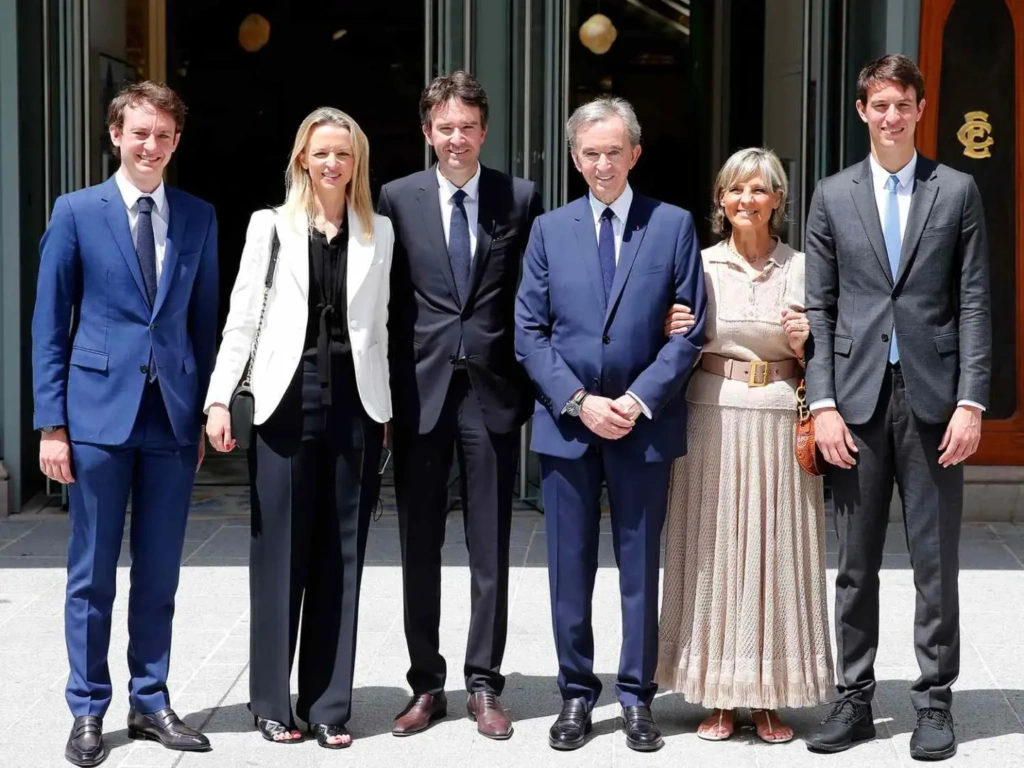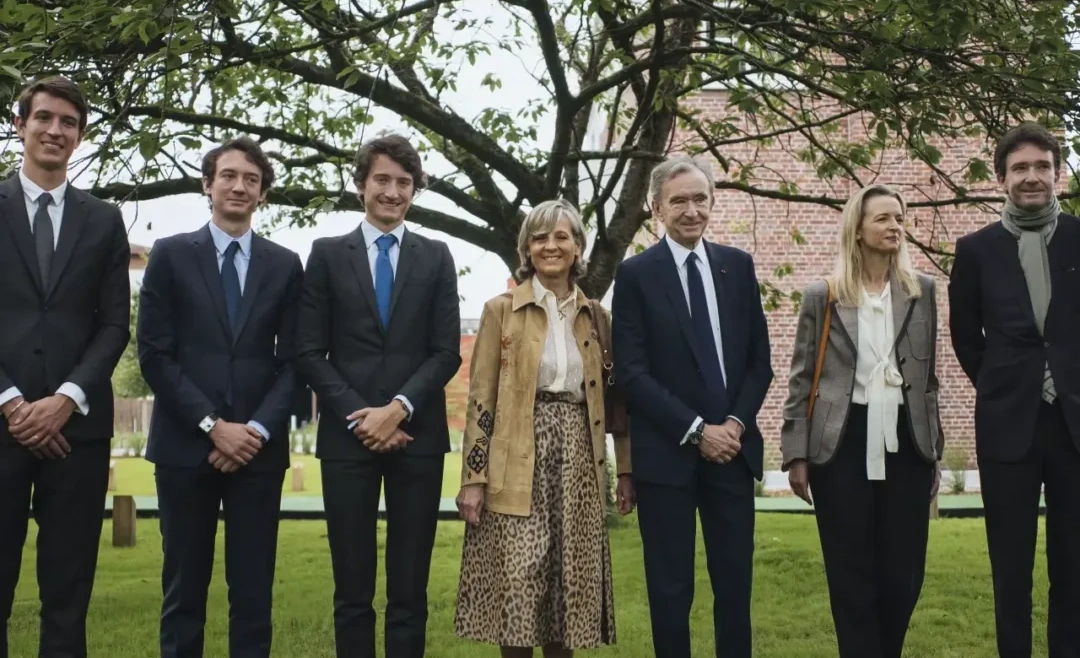The fashion industry‘s most powerful dynasties are facing their most critical challenge yet: the delicate transfer of generational power. As titans like Bernard Arnault (76), François Pinault (88), and Johann Rupert (74) approach their twilight years, their carefully groomed heirs stand ready to inherit empires worth hundreds of billions. However, history suggests that the passing of the torch rarely goes smoothly.
The Arnault Doctrine: Fashion’s Most Calculated Succession
The LVMH chairman’s obsession with legacy stems from witnessing his friend Jean-Luc Lagardère’s disastrous 2003 succession. Where Lagardère’s untimely death left an unprepared heir to dismantle a media empire, Arnault has spent two decades engineering what Dana Thomas calls “a closed meritocracy among his five children.”

The grooming process is remarkably systematic:
- Saturday store inspections since childhood to analyze sales data
- Monthly strategy lunches where siblings compete to solve business challenges
- Accelerated career paths seeing sons like Alexandre (30) helm Rimowa at 27
Yet the question remains: Are these truly merit-based promotions, or simply the most elaborate nepotism program in corporate history? As Thomas notes, “They wouldn’t have these positions at other companies at their ages.”
The Pinault Precedent: Early Transition as Competitive Advantage
In stark contrast, Kering’s François Pinault initiated succession at 66, handing control to son François-Henri in 2005. This early transition allowed for:
- Mentorship overlap during the handover
- Strategic continuity as luxury pivoted toward digital
- Youthful energy to revitalize Gucci and Balenciaga
The result? Kering’s market cap grew from €12B to €75B under François-Henri’s leadership. As one insider notes, “Pinault understood that holding power too long creates weak successors.”

The Hermès Exception: Six Generations of Stealth Wealth
While LVMH and Kering dominate headlines, the Dumas family’s Hermès represents fashion’s most successful multigenerational enterprise. Their playbook includes:
- Artistic leadership (Pierre-Alexis Dumas as creative director)
- Operational separation (CEO Axel Dumas handling business)
- Radical discretion (no earnings reports, no flashy acquisitions)
The strategy has yielded astonishing results: Hermès shares have outperformed LVMH by 300% since 2010, with profit margins nearing 40%.
The Next Generation: Nepo Babies or Visionary Leaders?
Emerging heirs bring divergent approaches:
| Heir | Company | Age | Notable Moves |
|---|---|---|---|
| Delphine Arnault | Dior | 49 | Launched LVMH Prize for young designers |
| Lorenzo Bertelli | Prada | 36 | Leading Versace acquisition talks |
| Marta Ortega | Zara | 41 | Pushed sustainability initiatives |
| Anton Rupert | Richemont | 38 | Board member since 2017 |
Industry observers remain divided. “These aren’t figureheads—they’re battle-tested executives,” argues one Paris-based editor. Yet critics note that even the most qualified heirs benefited from unprecedented access, like Alexandre Arnault’s direct reporting line to Tiffany’s CEO at age 28.
The Inconvenient Truth About Fashion Dynasties
Data reveals a sobering reality:
- 72% of family-owned luxury brands lose market share within 5 years of succession (Bain & Co)
- 58% fail to maintain profitability through generational transitions (McKinsey)
- Only 3 of the 10 largest fashion houses remain family-controlled
As the Wertheimers at Chanel prove, successful transitions require near-feudal levels of discretion and long-term planning. For other clans, the coming decade will test whether blood truly is thicker than balance sheets.
The ultimate irony? An industry that sells the fantasy of reinvention remains stubbornly committed to hereditary rule. As one veteran CEO quipped, “We’ll put a street-cast model in our campaign, but God forbid we hire an outsider to run the company.”
For now, all eyes remain on Paris, where the world’s most glamorous game of thrones continues to unfold—one meticulously planned succession at a time.

